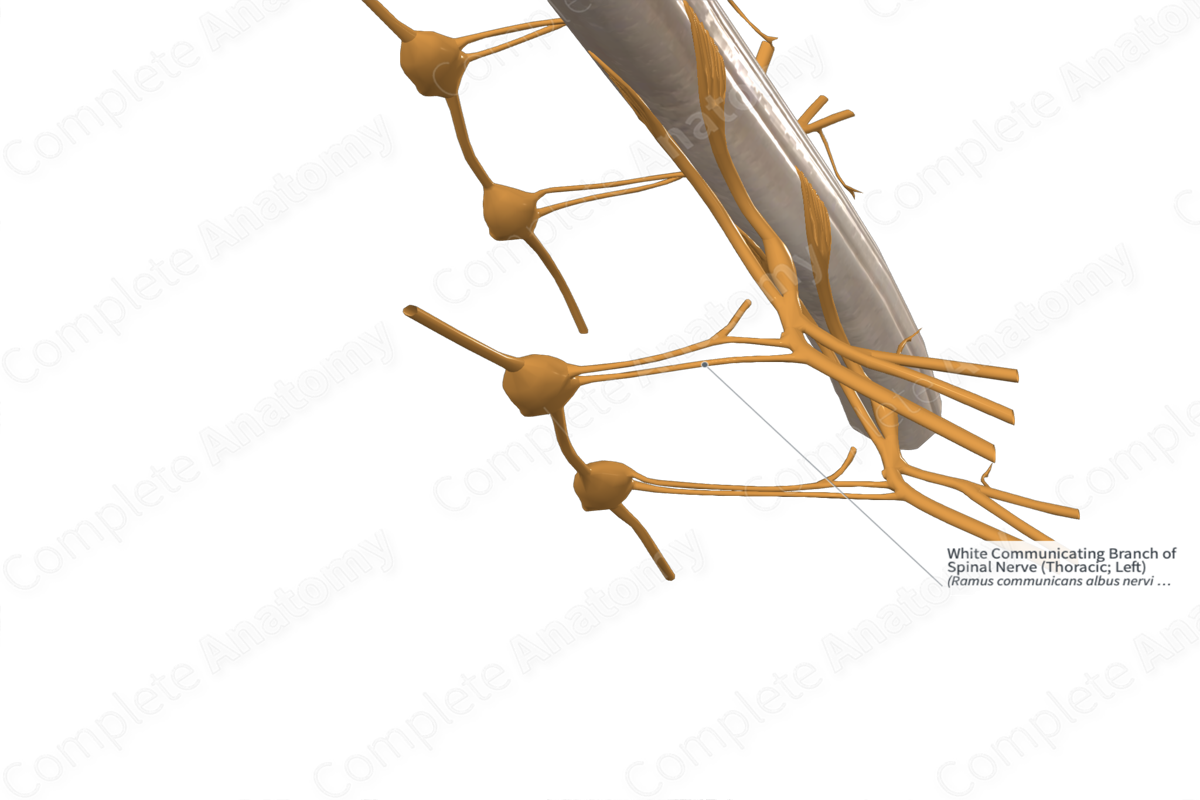
White Communicating Branch of Spinal Nerve (Thoracic; Left)
Ramus communicans albus nervi spinalis
Read moreQuick Facts
Origin: Spinal nerves from the first thoracic to the second lumbar nerves.
Course: Anteriorly to the sympathetic trunk.
Branches: No branches.
Supply: Preganglionic sympathetic innervation to the entire body.
Origin
The white communicating branches of the spinal nerves, or white ramus communicans, are short myelin rich axonal fasciculations that branch off from each spinal nerve, from the first thoracic nerve down to and including the second lumbar nerve.
Course
The white communicating branches run a short distance from a spinal nerve anteriorly to the sympathetic trunk.
Branches
There are no named branches.
Supplied Structures & Function
Each white communicating branch carries preganglionic sympathetic fibers that will do one of four things:
—synapse at a sympathetic chain ganglion at the same level;
—ascend the sympathetic trunk and synapse in a chain ganglion at a higher vertebral level;
—descend the sympathetic trunk and synapse in a chain ganglion at a lower vertebral level;
—exit the sympathetic trunk without synapsing (splanchnic nerve).
Postganglionic neurons that synapse with the preganglionic sympathetic neurons of the white rami will target blood vessels, sweat glands, and arrector pili muscles throughout the body wall, head, neck, and limbs, or in the case of splanchnic nerves, visceral organs.
Learn more about this topic from other Elsevier products
Spinal Nerve

A spinal nerve is comprised by a ventral root that originates from the cord's anterolateral aspect and a dorsal root from the posterolateral aspect, both of which are continuous with the spinal cord.



